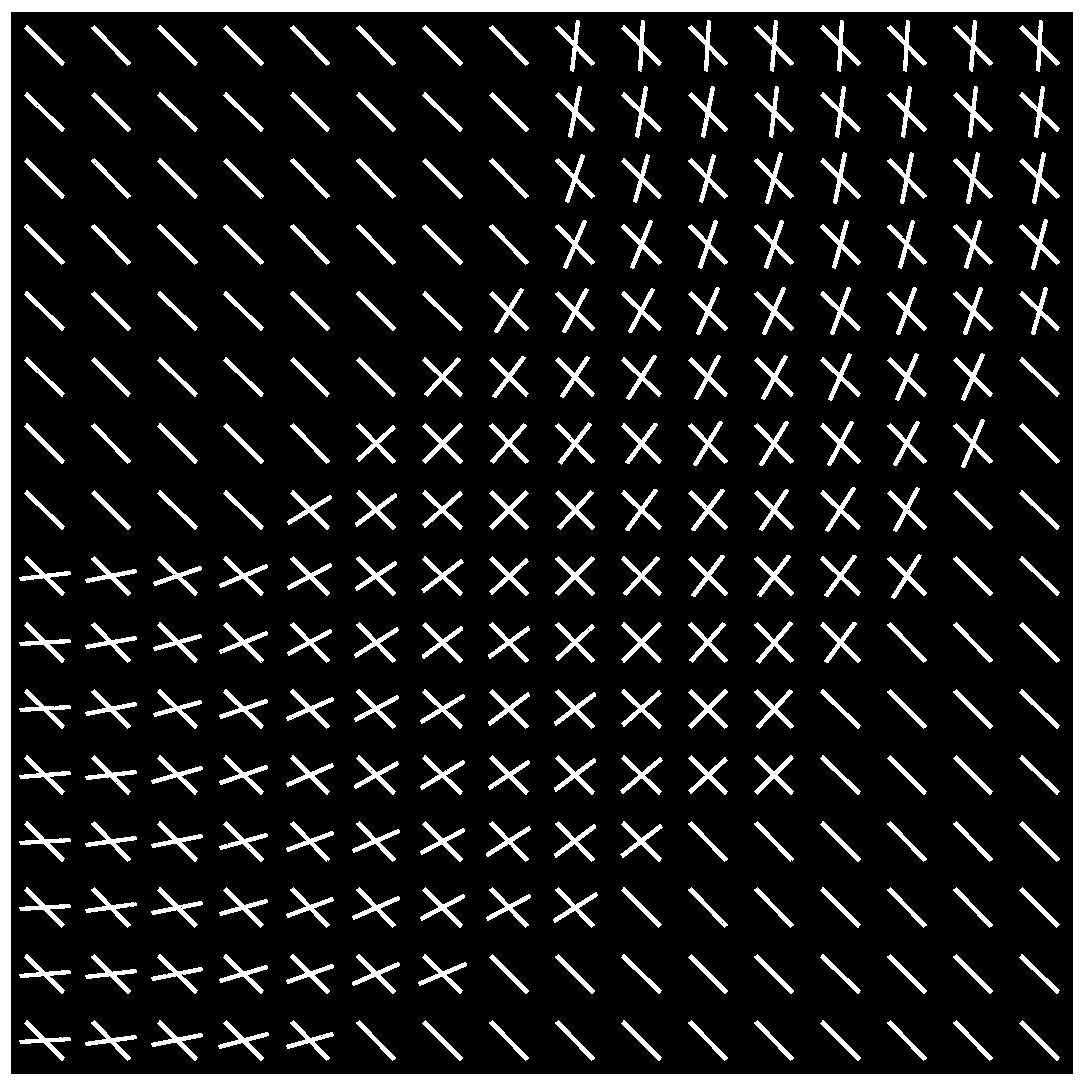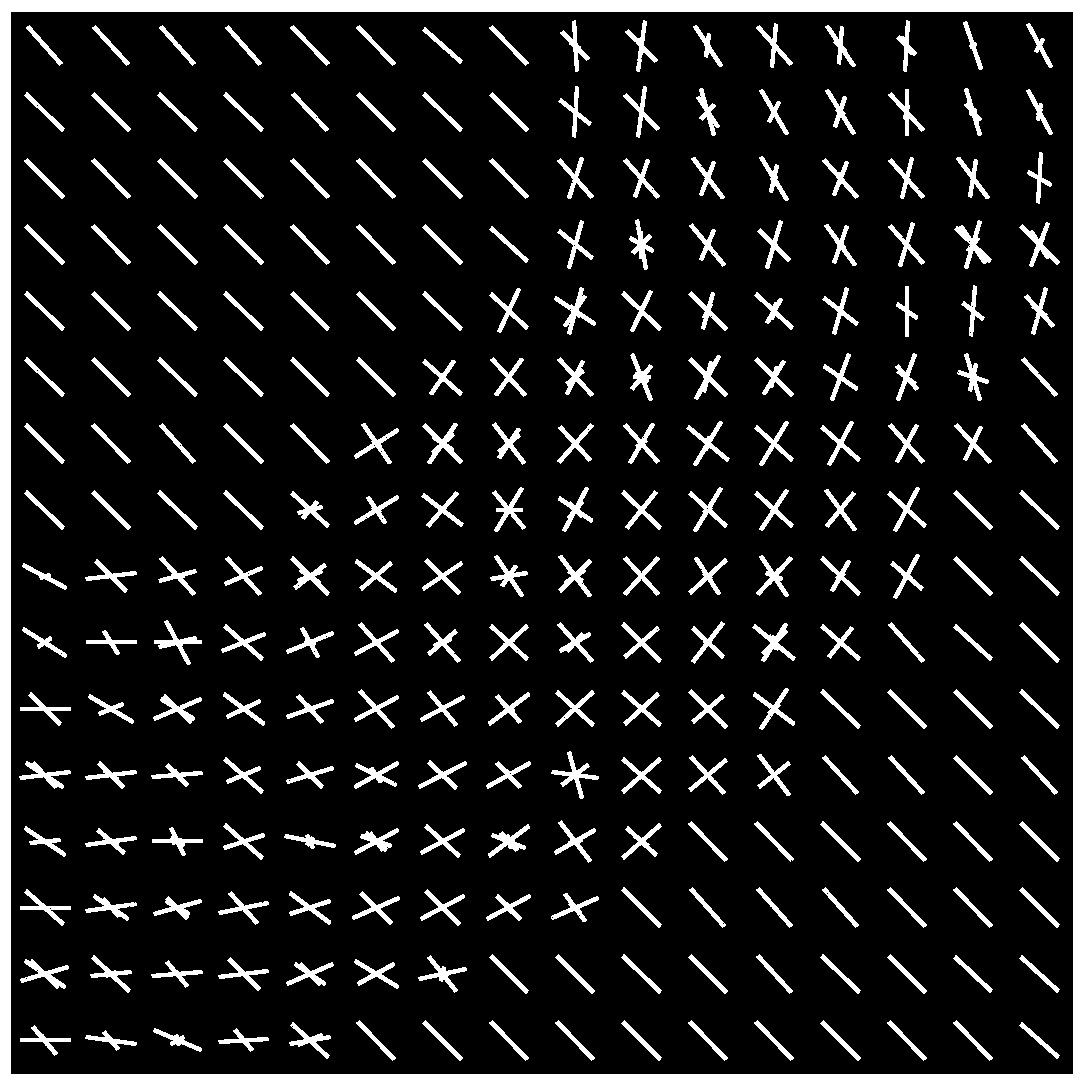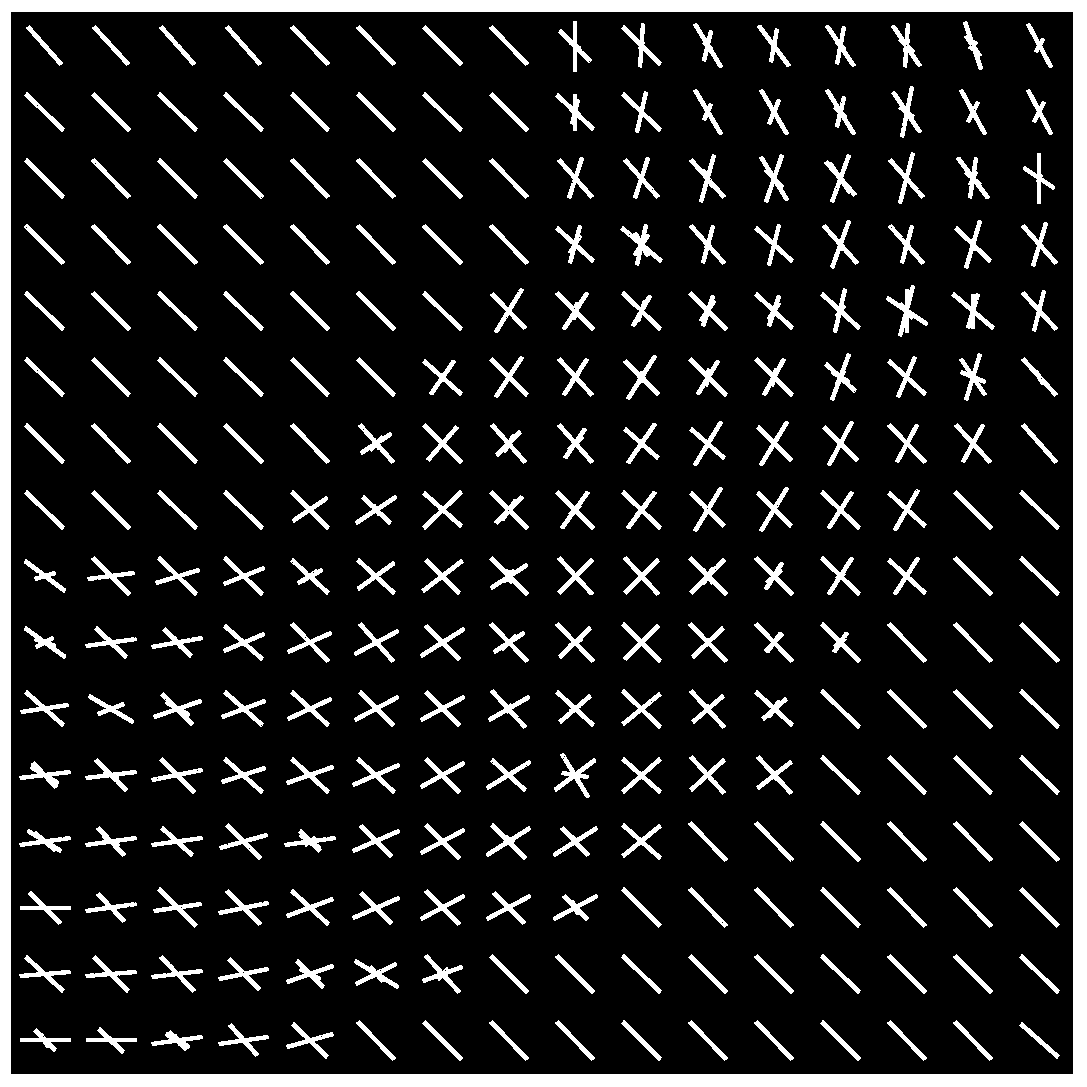Multi-tensor-based magnetic resonance diffusion weighted image structure adaptive smoothing method
A diffusion-weighted image and magnetic resonance technology, applied in the field of medical image processing, can solve the problems of low accuracy of fiber structure information and poor noise suppression, and achieve the effects of smooth avoidance, improved accuracy, and image noise suppression.
- Summary
- Abstract
- Description
- Claims
- Application Information
AI Technical Summary
Problems solved by technology
Method used
Image
Examples
specific Embodiment approach 1
[0039] Specific implementation mode one: see Figure 14 Describe this embodiment, the multi-tensor based magnetic resonance diffusion weighted image structure adaptive smoothing method described in this embodiment, the steps to realize the method are as follows:
[0040] Step 1: Select parameter λ, parameter a and total number of iterations k N The value of , set the initial neighborhood radius h (0) , set the current number of iterations k=1, calculate h (1) =ah (0) , the value range of λ is 0.5~5, the value range of a is 1N The range of value is 5~10, h (0) The value range of is 0.5~1.5;
[0041] Step 2: Calculate the initial fiber structure information of each voxel p and set parameters in Indicates that the direction of existence of the voxel is fibers, the proportion of which is Indicates how many different running directions exist for the fibers in this voxel, the parameter The value range of is 1~2;
[0042] Step 3: For each voxel p, record q as h cente...
specific Embodiment approach 2
[0044] Specific embodiment 2: This embodiment is a further limitation of specific embodiment 1. In the second step, the initial fiber structure information of each voxel p is calculated. is calculated using the constrained compressive sensing method.
[0045] The initial fiber structure information of each voxel p described in this embodiment Not only constrained compressive sensing methods can be used, but other methods can also be used.
specific Embodiment approach 3
[0046] Specific embodiment 3: This embodiment is a further limitation of specific embodiment 1. In the step 3, the weight of all voxels within the neighborhood radius to the voxel is calculated according to the fiber structure information of each voxel p , so as to perform weighted smoothing on the MRI diffusion weighted image, and the method of recalculating the fiber structure information of each voxel after smoothing is:
[0047] calculate Where ρ(p,q) is the Euclidean distance from voxel p to voxel q;
[0048] calculate which function Indicates the difference in fiber structure information between voxel p and voxel q;
[0049] calculate weight where the kernel function K loc ( ) and K st ( ) are two monotonically decreasing functions with a domain of [0,∞), and satisfy K loc (0)=K st (0)=1, when x≥1 K loc (x)=K st (x) = 0;
[0050] Calculate the sum of the weights of all voxels in the neighborhood U(p) to p
[0051] calculate S ...
PUM
 Login to View More
Login to View More Abstract
Description
Claims
Application Information
 Login to View More
Login to View More - R&D
- Intellectual Property
- Life Sciences
- Materials
- Tech Scout
- Unparalleled Data Quality
- Higher Quality Content
- 60% Fewer Hallucinations
Browse by: Latest US Patents, China's latest patents, Technical Efficacy Thesaurus, Application Domain, Technology Topic, Popular Technical Reports.
© 2025 PatSnap. All rights reserved.Legal|Privacy policy|Modern Slavery Act Transparency Statement|Sitemap|About US| Contact US: help@patsnap.com



